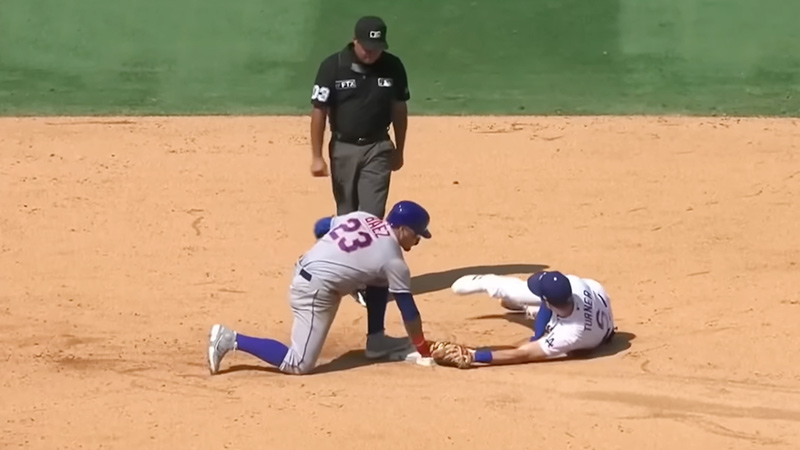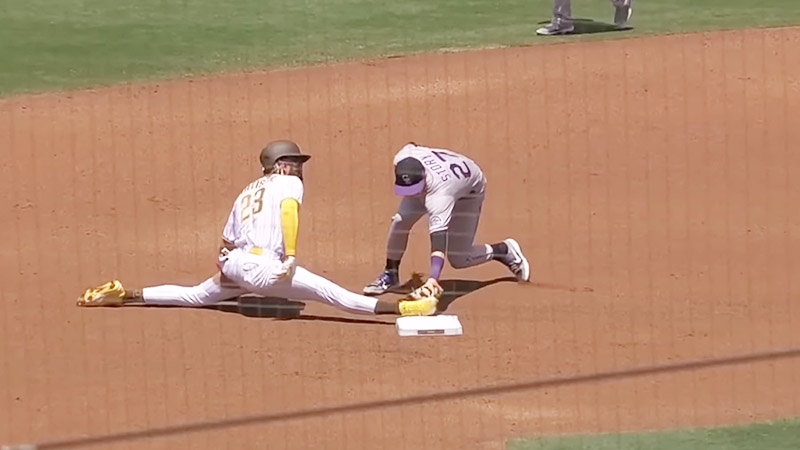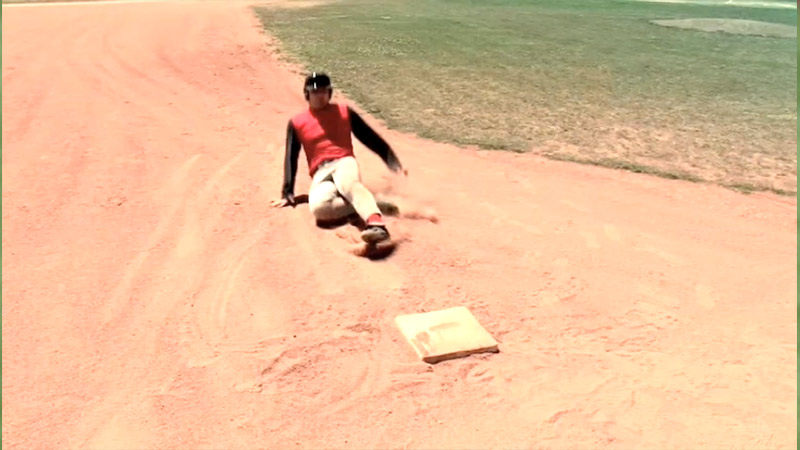Baseball is a game of skill, strategy, and athleticism. One of the most exciting aspects of the sport is the ability of players to slide and dive on the field, showcasing their agility and determination.
However, to ensure fair play and minimize the risk of injuries, baseball has established specific rules governing sliding and diving.
In this article, we will delve into the intricacies of baseball sliding and diving rules, exploring their history, application, and significance in the game.
What Are the Baseball Sliding And Diving Rules?
Baseball sliding and diving rules govern the techniques and situations in which players are allowed to slide or dive on the field.
These rules ensure fair play, maintain player safety, and minimize the risk of unnecessary collisions. Let’s delve into the details of these rules and how they are applied in the game of baseball.
When it comes to sliding, the rules dictate that a player is permitted to slide when attempting to advance to a base, evade a tag, or make a defensive play. However, there are certain guidelines that must be followed for a slide to be considered legal.
A player must make a reasonable effort to avoid contact with the fielder, execute a bona fide slide, and not engage in malicious intent.
Types of Slides in Baseball
The different types of slides that are commonly used in baseball include some of the following mentioned below.
Pop-up Slide
In a pop-up slide, the runner slides feet-first into the base and then quickly pops up to avoid a potential tag. This technique is often employed when the runner is trying to reach a base safely while maintaining momentum.
Hook Slide
A hook slide involves the runner sliding to the side of the base, with the leg hooking around the base to ensure contact is made. This technique allows the runner to reach the base while minimizing the chances of being tagged out.
Head-first Slide
While less common due to the increased risk of injury, head-first slides are sometimes used by runners to reach a base quickly. This type of slide involves the runner diving head-first toward the base, attempting to touch it before the tag is applied.
In addition to sliding rules, baseball also has rules governing diving plays. Diving is typically seen in defensive situations, such as making diving catches in the outfield or diving to tag out a runner.
The Baseball Sliding And Diving Rules

The baseball sliding and diving rules govern the techniques and situations in which players are allowed to slide or dive on the field.
These rules ensure fair play, and player safety, and minimize the risk of unnecessary collisions.
Let’s delve into the details of these rules and how they are applied in the game of baseball.
Explanation of the Rule
The rules surrounding sliding and diving in baseball establish guidelines for players to execute legal and safe plays.
When attempting to advance to a base, evade a tag, or make a defensive play, players are permitted to slide or dive.
However, certain criteria must be met to comply with the rules. A player must make a reasonable effort to avoid contact with the fielder, execute a bona fide slide or dive, and not engage in malicious intent.
Situations where Baseball Sliding And Diving Rules Apply
Baseball sliding and diving rules come into play in various game situations. Here are some key scenarios where these rules are relevant:
Sliding into Bases
When a player is running the bases, sliding is often employed to reach a base safely or avoid being tagged out. The rules outline specific sliding techniques, such as the pop-up slide or the hook slide.
These techniques help protect both the sliding player and the fielder from dangerous collisions.
Evading Tags
When a fielder attempts to tag a baserunner, the runner can employ sliding or diving techniques to avoid being tagged. The rules dictate the appropriate methods for executing these evasive maneuvers, ensuring the safety of all players involved.
Defensive Diving
In defensive situations, players may dive to make catches or attempt to tag out a runner. Diving rules outline the proper execution of these plays to prevent unnecessary injuries and maintain fair play.
Force Plays
Force plays occur when a runner is required to advance to the next base because the batter has become a baserunner. In these situations, sliding can be used to reach the base safely and avoid being tagged out.
Stealing Bases
Sliding and diving can also be employed during stolen base attempts. Runners may slide or dive to reach the base before the fielder can apply the tag, increasing their chances of a successful steal.
By adhering to the baseball sliding and diving rules, players ensure that their actions are within the boundaries of fair play and safety.
These rules provide a framework for executing slides and diving effectively while minimizing the risk of injuries to both the offensive and defensive players.
Baseball Sliding And Diving Rules in MLB

Major League Baseball (MLB) is the highest level of professional baseball in the United States, and it follows a comprehensive set of sliding and diving rules to ensure consistency and fairness across all games.
These rules are established and maintained by the MLB rules committee, which consists of representatives from both the league and the Major League Baseball Players Association (MLBPA).
Let’s take a closer look at how these rules are enforced and their recent adjustments.
Consistency and Enforcement
The sliding and diving rules in MLB are implemented and enforced by the umpires on the field. Umpires undergo extensive training to familiarize themselves with the rules and ensure their consistent application throughout the league.
They play a crucial role in determining whether a slide or dive complies with the guidelines, and their decision can have a significant impact on the outcome of a game.
Prioritizing Player Safety
In recent years, MLB has made several adjustments to the sliding rules to prioritize player safety and prevent dangerous collisions at the bases. These changes aim to reduce the risk of injuries, particularly in situations where a runner is sliding into a base with the intent to break up a potential double play.
The modifications emphasize that runners must make a bona fide slide and make a reasonable effort to avoid contact with the fielder.
Penalties Against Baseball Sliding And Diving Rules
Violations of the baseball sliding and diving rules can lead to penalties for both the offending player and their team. The severity of the penalties depends on the nature and intent of the violation. Some possible penalties include:
Ejections
If a player is deemed to have violated the sliding and diving rules intentionally or with malicious intent, they may be ejected from the game.
Ejections can have significant consequences for the player and their team, as they are required to leave the field and may face further disciplinary action.
Fines
In certain cases, the league may impose fines on players or teams that repeatedly violate the sliding and diving rules. These fines serve as a deterrent and encourage adherence to the rules.
Suspensions
For severe or repeated violations, players may face suspensions, which entail being prohibited from participating in a specific number of games.
Suspensions are designed to reinforce the importance of following the sliding and diving rules and protect the safety of all players.
Significance of Baseball Sliding And Diving Rules
The rules governing sliding and diving in baseball hold immense significance.
Player Safety and Injury Prevention
The foremost significance of baseball sliding and diving rules is to prioritize player safety. By setting clear guidelines on how players should slide and dive, the rules aim to minimize the risk of unnecessary injuries.
Collisions between players can result in severe injuries, including concussions, broken bones, and sprains.
The sliding and diving rules promote techniques that reduce the chances of such injuries, ensuring that players can compete without compromising their well-being.
Fair Play and Sportsmanship
The sliding and diving rules play a crucial role in maintaining fair play and upholding the spirit of sportsmanship in baseball. These rules ensure that players cannot engage in reckless or malicious actions that may harm opponents intentionally.
By establishing guidelines for proper sliding and diving techniques, the rules create a level playing field where all participants can compete fairly. This contributes to the integrity and reputation of the game.
Strategic Element
The sliding and diving rules add an exciting and strategic element to the game of baseball. Coaches and players must understand and employ effective sliding and diving techniques to gain advantages on the field.
Proper execution of slides and dives can help runners reach bases safely, evade tags, and extend plays.
Conversely, fielders can make spectacular defensive plays by employing diving techniques to catch balls or make tags. The rules enhance the overall skill and tactical aspects of the game, making it more engaging for both players and fans.
History of Baseball Sliding And Diving Rules
The history of sliding and diving rules can be traced back to the early development of baseball.
As the sport evolved in the 19th century, players began to experiment with different techniques to gain advantages on the bases and in defensive plays.
However, the absence of specific regulations led to potential dangers and controversies.
Introduction of Sliding Rules
To address safety concerns and ensure fair play, the first sliding rules were introduced in the late 1800s. These rules aimed to define legal sliding techniques, such as sliding feet-first or head-first, while prohibiting dangerous actions that could harm fielders or runners.
Evolution and Refinement
Over time, the sliding and diving rules underwent several refinements and adaptations. The development of sports medicine and increased awareness of player safety prompted adjustments to further reduce the risk of injuries.
The rules were modified to discourage players from initiating contact with fielders and to establish clearer guidelines on the execution of slides and dives.
Contemporary Revisions
In recent years, the sliding and diving rules have undergone further changes in professional baseball leagues, including Major League Baseball (MLB).
These revisions have focused on enhancing player safety, particularly at the bases, to prevent dangerous collisions.
For instance, the “neighborhood play” rule was adjusted to prevent fielders from unnecessarily exposing themselves to sliding runners.
Such revisions reflect the ongoing commitment of the sport to ensure player welfare while preserving the essence of the game.
The history of baseball sliding and diving rules demonstrates the sport’s dedication to the well-being of its players.
FAQs
Can a runner initiate contact with a fielder during a slide?
No, a runner must make a reasonable effort to avoid contact with a fielder during a slide.
This rule aims to prevent dangerous collisions and maintain player safety on the field. Players are expected to slide in a manner that minimizes the risk of injury to both themselves and the fielder.
What is a pop-up slide?
A pop-up slide is a sliding technique commonly used by baserunners. In a pop-up slide, the runner approaches the base feet-first and slides just before reaching it.
Upon sliding, the runner quickly pops up to their feet, allowing them to maintain momentum and potentially avoid a tag from a fielder.
This technique is particularly useful when attempting to reach a base safely without losing speed.
Are head-first dives allowed in baseball?
Yes, head-first dives are allowed in baseball, but they must be executed safely and not endanger other players. Head-first dives are often utilized by baserunners trying to reach a base quickly or evade a tag.
However, due to the increased risk of injury, players are encouraged to use caution and employ proper techniques when opting for a head-first dive.
Can a fielder block a base to prevent a runner from sliding?
No, fielders are not allowed to block a base without possession of the ball. Blocking a base without a legitimate reason can lead to dangerous collisions between the runner and the fielder.
The rules prioritize player safety, and fielders must make a reasonable effort to allow the runner a clear path to the base unless they have possession of the ball and are attempting to make a play.
Can a runner slide into first base?
Sliding into first base is legal in baseball, but it is often discouraged. Unlike other bases where sliding can provide advantages, sliding into the first base may slightly delay the runner’s arrival at the base.
Since the objective of reaching first base quickly is crucial, runners typically opt for running through the base rather than sliding.
Bottom Line
Baseball sliding and diving rules are an essential aspect of the game, ensuring fair play, and minimizing the risk of injuries.
By understanding and following these rules, players can exhibit their athleticism while maintaining a safe and competitive environment on the field.
As the sport continues to evolve, it is vital to prioritize player safety and adapt the rules accordingly, allowing baseball to remain a thrilling and enjoyable game for players and fans alike. Best of luck.







